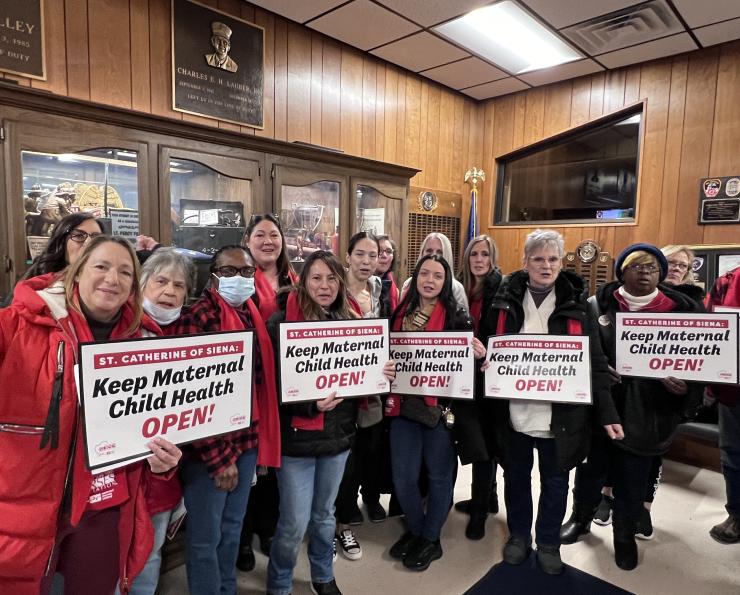Save Maternal Health Services

Over the past two decades, maternal mortality in other high-income countries has decreased, while in the U.S., it has increased.
The United States spends more per person on healthcare than other high-income countries but has a higher rate of maternal mortality. That’s because most other high-income democratic countries have universal, single-payer healthcare systems, instead of the U.S.’ profit-driven system.
The maternal health crisis in the U.S. disproportionately impacts Black and Indigenous pregnant persons, with stark disparities in New York state and New York City. Despite this crisis, and New York's stated goals of improving maternal health outcomes, hospitals are closing maternity health services throughout the state.
The closure of these services comes amid a national maternal and infant mortality crisis. A recent study has shown a doubling of maternal deaths over the last 20 years, with New York having a high pregnancy-related mortality rate of 18.2 per 100,000 live births, with 78% of those deaths preventable.
Fighting Back Against Closures
Throughout the state, NYSNA nurses have been speaking out against the negative impact that reducing maternal health services has in local communities.
In the Bronx, nurses fought back against Montefiore Health System’s proposed closure of the Nurse-Family Partnership program in 2023 and won a commitment to continue this program that serves at-risk mothers.
On Long Island, Catholic Health System’s St. Catherine of Siena Hospital administrators abruptly announced at the end of 2023 they would suspend maternity services as of Feb. 1, 2024. Although nurses spoke out to stop the closure of services along with hundreds of concerned community members, it appears the St. Catherine administration is trying to bypass a full Department of Health review of this closure and shift maternal services to other Catholic Health facilities.
In upper Manhattan, NYSNA nurses protested the sudden closure of midwifery services at NewYork-Presbyterian Allen Hospital, located in an underserved Black and brown community. They cited midwives’ vital role in the community as well as their track record of lower c-section rates compared to the city overall. Nurses and patient advocates also raised concerns about how the closure would worsen health disparities; ultimately pressuring the hospital to preserve this valuable service.
In Troy, capital region NYSNA nurses gathered at town hall and council meetings to raise their concerns about the impact of St. Peter’s Health Partners' proposed closure of maternal health services at Burdett Birthing Center. Thanks to nurses and the community’s tireless advocacy, St. Peter’s withdrew their plans to close the center in Spring 2024.
Since St. Peter’s acquired Burdett and other area hospitals, administrators have cut vital healthcare services. Ellis Medicine has also cut services after entering a merger agreement with St. Peter’s. Nurses are particularly concerned about the future of the Bellevue Woman’s Center, Schenectady’s only maternal-child health center, if the merger is approved. Corporate hospital consolidation often leads to healthcare cuts, and capital region nurses are sounding the alarm to prevent negative health outcomes for mothers and babies.
Putting Pregnant Patients Over Profits
Maternal health services are not a budget priority for hospitals since they generally pull in less money per patient than other services. More than half of live births in New York are paid by Medicaid, not private insurance. Medicaid pays hospitals much less than private insurance, and that drives the closure of essential but “unprofitable” services like maternal and child healthcare. Addressing the maternal health crisis and the inequities in pregnancy outcomes for birthing people requires centering the needs of patients. That means investing in and expanding maternal care services, instead of putting them on the chopping block.
When we have nurses, doctors, patients, and community members all working together to save services, we can save lives and improve the health of our families and communities.